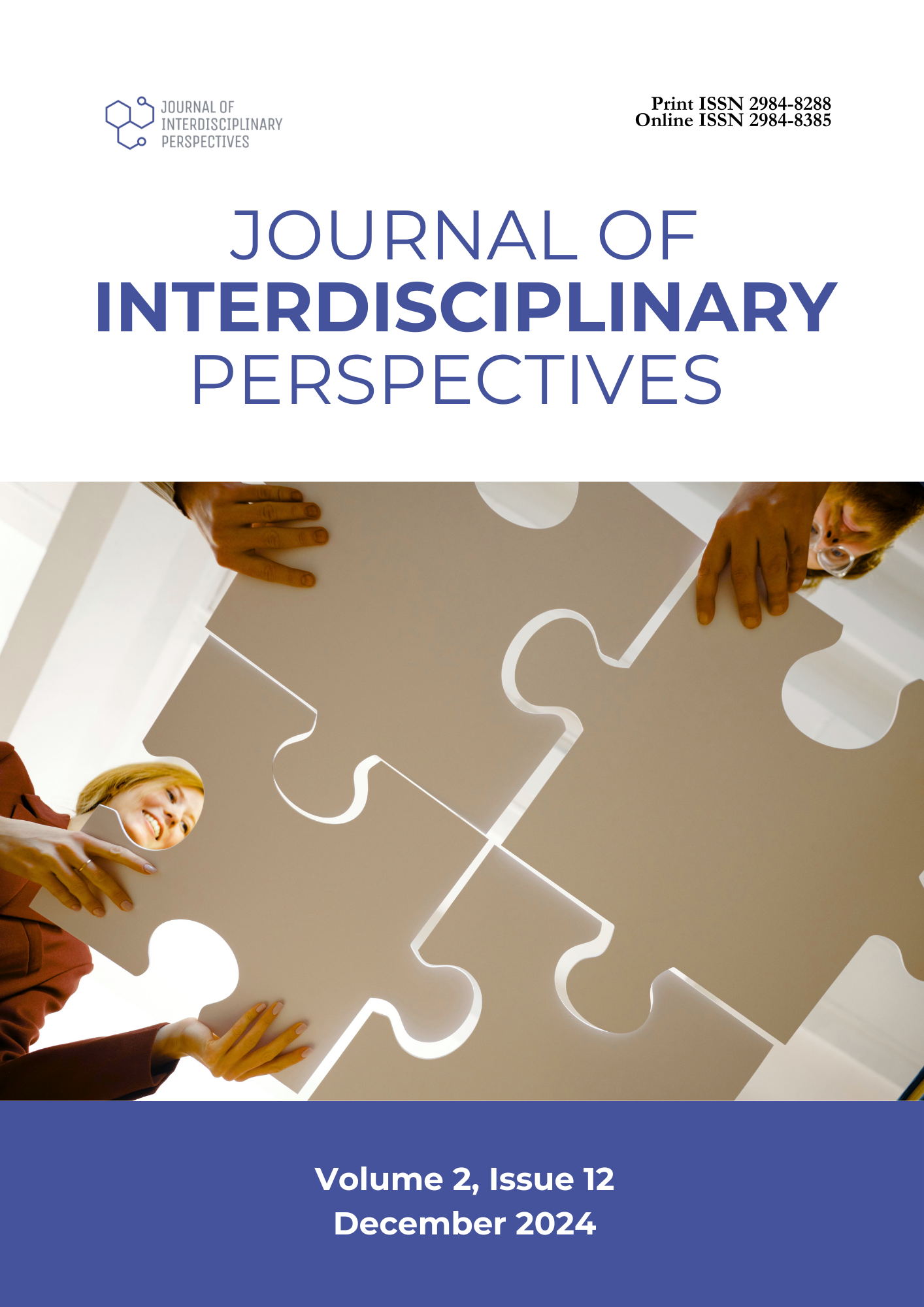Perspectives of Teachers on the Integration of Assistive Technology in Higher Education Inclusive Classrooms in the Philippines: Importance, Benefits, Social Support, and Challenges
DOI:
https://doi.org/10.69569/jip.2024.0428Keywords:
Assistive technology, Higher education, Inclusive classroom, Social support, TeachersAbstract
This study explored the perspectives of teachers on using assistive technology (AT) in inclusive higher education classrooms. Although previous research showed AT benefits students with disabilities, there is limited understanding of the challenges, social support, and strategies from teachers' viewpoints in this context. The study also looked at how teachers' demographics—such as age, education, and experience—affect their views on AT. Using a quantitative descriptive correlational design, surveys were given to teachers in various higher education institutions in the 2nd District of Misamis Oriental. The findings revealed that teachers strongly agree on the importance of AT in the classroom and its positive impact on student learning. Despite recognizing challenges, especially a lack of training, they still viewed AT as valuable for independent living, job skills, and community involvement. A strong negative correlation was found between teachers' views on AT and their age, meaning older teachers were less positive about AT integration. In contrast, a strong positive correlation was found between teachers' attitudes and their highest educational qualifications, indicating that teachers with higher qualifications have more favorable views on AT, likely due to better understanding and exposure. The very weak negative correlation between attitudes and years of teaching experience suggested that teaching experience does not significantly affect views on AT. Therefore, professional development in AT should be provided regardless of experience. A strong positive correlation was found between teachers' attitudes and the use of specific AT devices, meaning teachers who use these devices are more positive about AT. The results suggest that while teachers value AT, their views were influenced by age, education, and experience with AT devices. Improving AT training and providing hands-on experience will enhance attitudes toward AT, benefiting students in inclusive classrooms. Tailored professional development programs may also support effective AT use in education.
Downloads
References
Ahmed, A. (2018). Perceptions of using assistive technology for students with disabilities in the classroom. International Journal of Special Education, 33(1), 129-139. https://www.learntechlib.org/p/188646/
Al-Dababneh, K. A., & Al-Zboon, E. K. (2022). Using assistive technologies in the curriculum of children with specific learning disabilities served in inclusion settings: teachers’ beliefs and professionalism. Disability and Rehabilitation: Assistive Technology, 17(1), 23-33. https://doi.org/10.1080/17483107.2020.1752824
Alsolami, A. S. (2022). Teachers of special education and assistive technology: Teachers’ perceptions of knowledge, competencies and professional development. SAGE Open, 12(1), 21582440221079900. https://doi.org/10.1177/21582440221079900
Bice, H., & Tang, H. (2022). Teachers’ beliefs and practices of technology integration at a school for students with dyslexia: A mixed methods study. Education and Information Technologies, 27(7), 10179-10205. https://doi.org/10.1007/s10639-022-11044-1
Bouck, E. C., & Long, H. (2021). Assistive Technology for Students With Disabilities: An Updated Snapshot. Journal of Special Education Technology, 36(4), 249-257. https://doi.org/10.1177/0162643420914624
Dela Cruz, M., Reyes, A., & Soriano, P. (2020). Surveying the landscape: Teachers' perspectives on inclusive education in the Philippines. Journal of Educational Research and Innovation, 15(3), 234-248.
Dela Fuente, J. A. (2021). Implementing inclusive education in the Philippines: College teacher experiences with deaf students. Issues in Educational Research, 31(1), 94-110. https://doi.org/10.3316/informit.748877765999107
Newton, D. A., & Dell, A. G. (2011). Assistive Technology. Journal of Special Education Technology, 26(3), 47-49. https://doi.org/10.1177/016264341102600305 Dewsbury, B., & Brame, C. J. (2019). Inclusive teaching. CBE—Life Sciences Education, 18(2), fe2. https://doi.org/10.1187/cbe.19-01-0021
Ewing, L. A. (2021). Mentoring novice teachers. Mentoring & Tutoring: Partnership in Learning, 29(1), 50-69. https://doi.org/10.1080/13611267.2021.1899585 Hersh, M., & Trief, E. (2020). The impact of assistive technology on academic outcomes: A meta-analysis. Journal of Educational Technology, 45(3), 321-335.
https://doi.org/10.1080/17483107.2019.1642395
Kisanga, S. E., & Kisanga, D. H. (2022). The role of assistive technology devices in fostering the participation and learning of students with visual impairment in higher education institutions in Tanzania. Disability and Rehabilitation: Assistive Technology, 17(7), 791-800. https://doi.org/10.1080/17483107.2020.1817989
McNaughton, D., & Light, J. (2013). The iPad and mobile technology revolution: Benefits and challenges for individuals who require augmentative and alternative communication.
Augmentative and Alternative Communication, 29(2), 107-116. https://doi.org/10.3109/07434618.2013.784930
McNicholl, A., Casey, H., Desmond, D., & Gallagher, P. (2021). The impact of assistive technology use for students with disabilities in higher education: a systematic review. Disability and rehabilitation: assistive Technology, 16(2), 130-143. https://doi.org/10.1080/17483107.2019.1642395
Reilly, D., Neumann, D. L., & Andrews, G. (2019). Investigating gender differences in mathematics and science: Results from the 2011 Trends in Mathematics and Science Survey. Research in Science Education, 49(1), 25-50. https://doi.org/10.1007/s11165-017-9630-6
Roose, I., Vantieghem, W., Vanderlinde, R., & Van Avermaet, P. (2019). Beliefs as filters for comparing inclusive classroom situations. Connecting teachers’ beliefs about teaching diverse students to their noticing of inclusive classroom characteristics in videoclips. Contemporary Educational Psychology, 56, 140-151. https://doi.org/10.1016/j.cedpsych.2019.01.002
Schober, P., Boer, C., & Schwarte, L. A. (2018). Correlation coefficients: appropriate use and interpretation. Anesthesia & analgesia, 126(5), 1763-1768. https://doi.org/10.1213/ANE.0000000000002864
Schreier, M. (2018). Sampling and generalization. The SAGE handbook of qualitative data collection, 84-97. https://doi.org/10.4135/9781526416070 Sousa, V. E., Matson, J., & Dunn Lopez, K. (2017). Questionnaire adapting: Little changes mean a lot. Western journal of nursing research, 39(9), 1289-1300.
https://doi.org/10.1177/0193945916678212
Yusoff M.S.B (2019). ABC of content validation and content validity index calculation. Education in Medicine Journal, 11(2):49–54. https://doi.org/10.21315/eimj2019.11.2.6 Zepeda, S. J. (2019). Professional development: What works. Routledge.
Downloads
Published
How to Cite
Issue
Section
License
Copyright (c) 2025 Journal of Interdisciplinary Perspectives

This work is licensed under a Creative Commons Attribution-NonCommercial 4.0 International License.








